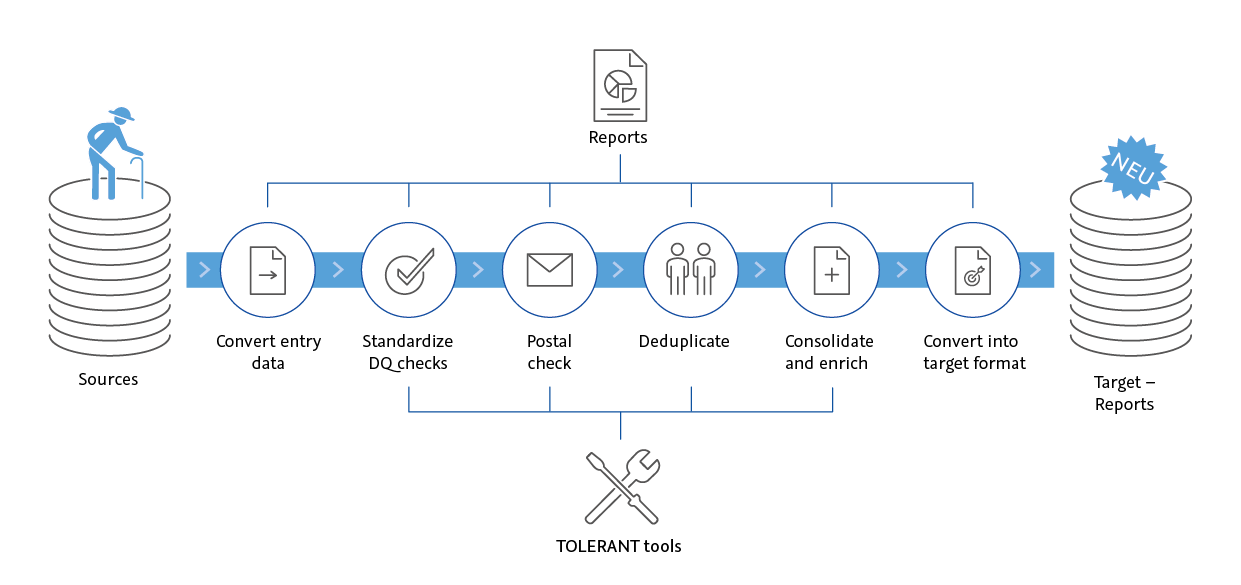Lost in Translation: TOLERANT in Tokyo
A field report
»Lost in Translation« is a 2003 feature film starring Bill Murray and Scarlett Johansson. In the film, Murray plays an aging actor filming a commercial in Tokyo. The stage directions he receives during the shoot are repeatedly summarized into one sentence by the interpreter. The actual content is lost in the process. This »Lost in Translation« scene thus largely determines the title of the film.
The film portrays Tokyo as a foreign metropolis that turns foreigners from Europe or the United States into jet-lagged, lost individuals deprived of language. It won an Oscar for Best Original Screenplay in 2004, and Murray was awarded a Golden Globe for Best Actor in a Leading Role.
TOLERANT Software in Tokyo
TOLERANT Software has been active on the Asian market since 2014. Coupled with this are many visits to Tokyo by management and consultants. While the movie shows a rather gloomy, melancholic picture of Tokyo, our experiences at TOLERANT are completely different.
Helpful and friendly instead of »lost«
But first things first. As long as you don’t know the Japanese language, there are a number of difficulties. Perhaps not yet upon arrival at the airport, as signs in English and a large number of service staff make sure you don’t get lost.
On my first arrival in Tokyo, I left my iPad on the plane, slightly over-slept from the long flight. An absolute no-go at a European airport. In my mind, I could already see a martial task force blowing up the iPad. Not so in Tokyo. A friendly official smuggled me back through the border controls and led me to a service desk, where I was handed the iPad five minutes later. I had similar experiences on the subway, in the hotel and with business partners: Most people speak English, are extremely friendly and happy to help.
Japanese writing, the fascinating hurdle
The exception is in the cab. Here you will actually get lost if you do not have your destination printed on a piece of paper in Japanese characters beforehand. Most cab drivers do not speak English and often have problems with small letters.
And it is probably the Japanese script that contributes to the exotic flair of the island state for us Europeans. Unlike the Chinese script, you have to learn not just one, but three scripts: Kanji, Hiragana and Katakana. This is why Japanese is considered the most difficult writing system in the world.
The challenge: data migration to Japanese
If you carry out a data migration project in Japan, as we at TOLERANT have frequently done in recent years, the first step is to take care of the special features of the writing systems. Typically, Japanese customer names are not only in the Kanji spelling, but also in Kana. With the simplification that the data is stored separately. Addresses on the other hand, especially address additions, are found in many data sets in mixed Kanji/Kana form.
Typical Japanese dataset (name only):
From a data quality perspective, the double storage of customer names in different writing systems brings with it a whole host of potential sources of error. The most common questions in this context are:
- Are the fields completely filled?
- Are the fields filled with the correct writing system?
- Are the names spelled correctly?
- Have the first and last names been interchanged?
Duplicate check also for Kanji and Kana
As you can »easily« see, the first name and last name in the above example are swapped in the Kana writing system. For a conventional duplicate check or even for the correct letter salutation, this quickly means: »Lost in Translation«!
Fortunately for our migration projects, TOLERANT Match masters the duplicate check in the most diverse Asian character sets accurately and error-tolerantly. The powerful search algorithms find records that match based on a customized set of rules that have been precisely tuned to the data migration. The error-tolerant duplicate matching also takes into account spelling and typing errors for kanji and kana or interchanged words for names and addresses.
Powerful algorithms for successful data migration projects
Duplicate checking always plays a central role in a migration project. Data from a wide variety of sources must be merged into a new data pool. The sources are not linked to each other and are only linked via the duplicate check. The more powerful the algorithms are at this point, the more successful the entire project will be in the end.
Stefan Sedlacek
Would you like to learn more? Then we look forward to receiving your e-mail at info@tolerant-software.de or your call at +49 711 400 4250.



 Shutterstock
Shutterstock